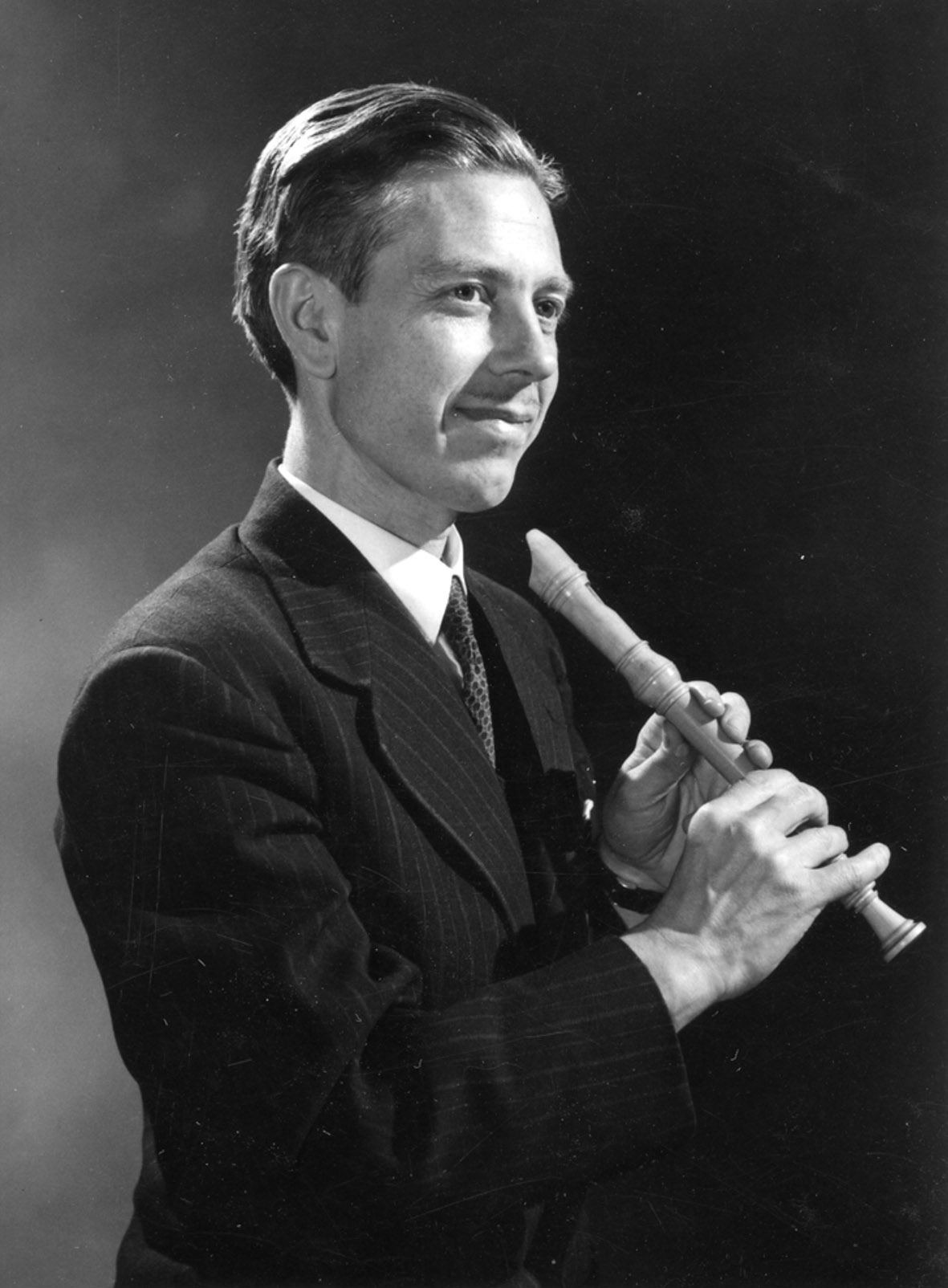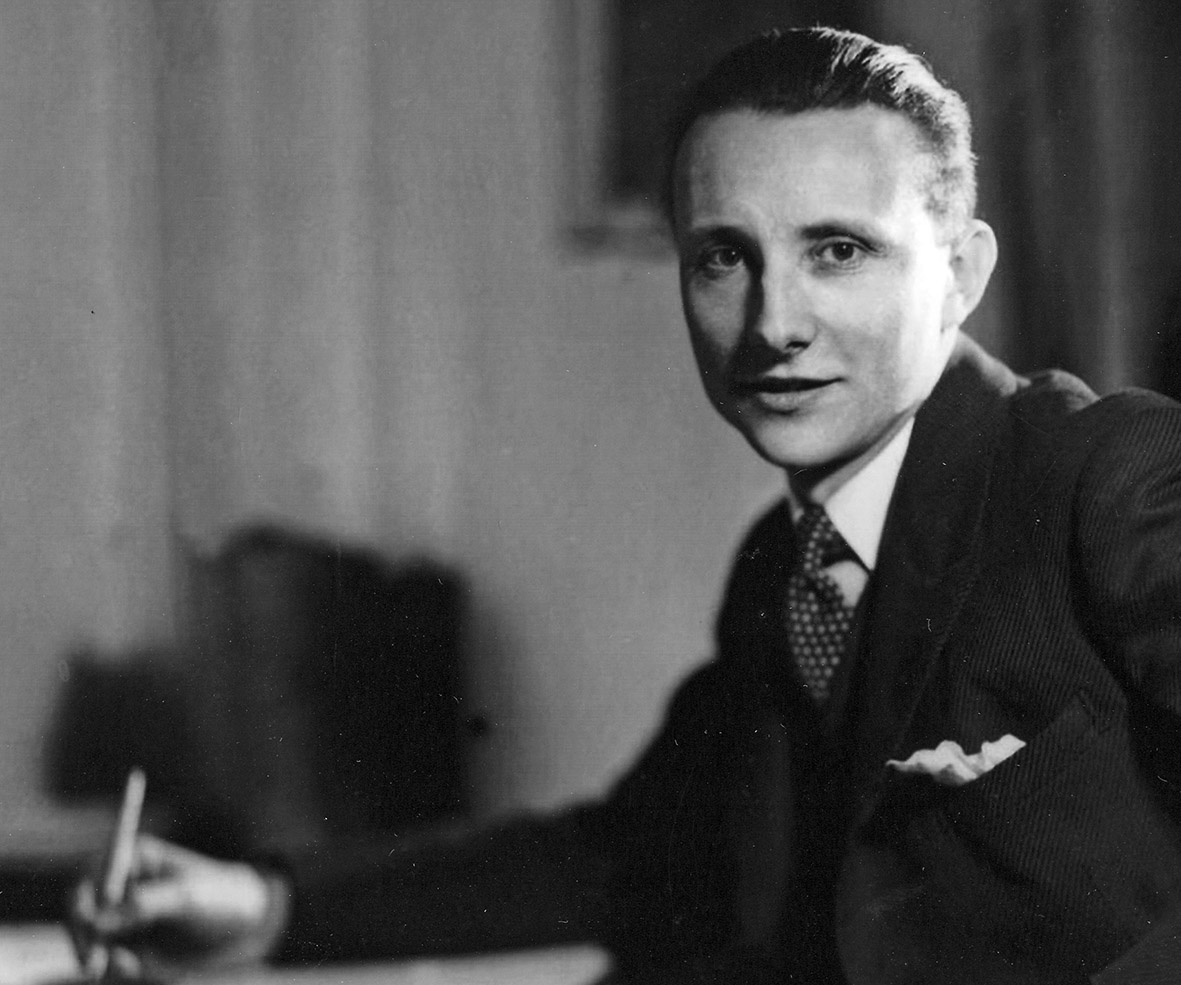Marina Firpo on Lennox Berkeley's ‘Flute Sonatina’
The Italian flautist Marina Firpo analyses and compares works by Berkeley, Malcolm Arnold and York Bowen.
In the field of composition for flute and piano, and more precisely in England during the 1940s, we find ourselves looking at the two Sonatinas by Lennox Berkeley and Malcolm Arnold and the Sonata by Edwin York Bowen. While they were all composing in the same period and for the same instrumentation, they were each in different stages of their life and education.
Lennox Berkeley (1903–1989)
Composed in 1939, when the composer was 36 years old, the Sonatina for Flute (or Treble Recorder) and Piano (or Harpsichord) Op. 13 can be described as neoclassical or in a modernist 'early style', as a result of the eminently Parisian background of the composer. Berkeley was already fond of France: firstly due to the origin of his mother's family, whom he often went to visit, and secondly as a result of the years that he spent in Paris, initially under the guidance and encouragement of Maurice Ravel, to whom the young Berkeley had first shown some music at Oxford in 1926. That was how Lennox Berkeley came to study in Paris from the autumn of 1926 to 1932, under the watchful eye of Nadia Boulanger. The Parisian years were extremely influential in the composer's later works. Not only did he learn enormously from Boulanger, but he had also the opportunity to make contact with the greatest composers of the time: Maurice Ravel, Francis Poulenc, Igor Stravinsky, Darius Milhaud, Albert Roussel and Arthur Honegger, and with everything that concerned the cosmopolitan cultural milieu which made Paris a true centre of modern art, gathering artists from all over the world.
The Sonatina Op. 13 was written for the recorder player Carl Dolmetsch, but it became well known in the version for flute and piano championed by Sir James Galway forty years after the year of composition. The first performance [with Dolmetsch and the harpsichordist Christopher Wood] took place on Saturday 18 November 1939 at the Wigmore Hall in London, as reported by The Times two days later:
The work is a success both for the instrument and for the composer. Mr. Berkeley has taken some time to find himself stylistically, but in this ‘Sonatina’ his characteristic use of figuration sounds well in the crisp tones of the harpsichord and the melodic material for the wind instrument is happily conceived so that the whole effect is neat, piquant, and gay without seeming feather-brained.
In this Sonatina Berkeley has created an eclectic combination of tradition and innovation. As Boulanger said, Berkeley had ‘a natural ear for harmony that made it unnecessary to think about it too much’,1 and his natural ability can be heard in glimmers of tonality in alternation with a motivic instability, creating a varied expressive universe.
Stravinskian pianistic pounding opens the ‘Moderato’, followed by figures derived from various combinations of octatonic modules.

The interval of a minor third – a constitutive component of the octatonic scale – identifies itself as the major melodic element, subject to a continuous dialogue between the two instruments.
The second movement, ‘Adagio’, is set in the Lydian mode.

Common in Bartók, Debussy and Ravel, it colours different melodies by Berkeley from this period onward, and can also be seen in slow movements by Britten (e.g. Les Illuminations (1939), nos. VIl and IX). The melody of this ‘Adagio’ has much in common with the corresponding movement of Berkeley's String Trio Op. 19 written in 1943.
The final ‘Allegro Moderato’ is configured in sonata rondo form. Short, wrenched scales and, incisive, rhythmic profiles give a ‘pyrotechnic’ appearance to the movement, in which the two instruments create a dense dialogue between different figures.
Edwin York Bowen (1884–1961)
The Sonata for Flute and Piano Op. 120 finds itself in a completely different context. Written in 1946, when York Bowen was 62 years old, the music has a Post-Romantic edge, far from the ground-breaking ideas that will take place later.
An infant prodigy, Bowen began composing in the first decade of the 20th century, assimilating the modernist aesthetic. Saint-Saëns described him as the most remarkable of the young British composers. Also an excellent pianist, he was sometimes known as the ‘English Rachmaninov’.
His Sonata for flute and piano Op. 120 was dedicated to Gareth Morris, who at the time was Principal Flute of the Philharmonia Orchestra. The first performance was given at the Wigmore Hall in May 1949, with Morris playing flute and Bowen himself at the piano. The Sonata was broadcast on the BBC with the same interpreters in 1947 and in 1950.
The influence of Brahms, Chopin, Rachmaninov, Strauss and Debussy is clearly evident in his work and it is this amalgamation of styles that makes Bowen's sound world so remarkable. As an example of this, in the first movement, Bowen inserts a passage from Prélude à l'après-midi d’un faune by Debussy, 'squeezing' it rhythmically and entrusting the figuration to the right hand of the piano.
Bowen pays particular attention to melody and the use of thematic ideas that can create emotions. His composition teacher, Frederick Corder (1852–1932), in his treatise, Modern Musical Composition, underlines the importance of character in music and the use of the ‘technique of emotion’:
The only true function of modern music is to describe and arouse certain moods and emotions – not all, by any means: those that require words for their expression are beyond music's reach; but the following is a fairly complete list of the sentiments which we may fairly endeavour to depict. Agitation, agony, despair, energy, exhilaration, expectation, gloom, joy, love, mystery, pathos, peace, terror, rage, patriotism, pleading. [...] As to the means by which we proceed, I will first mention the prime colours with which we paint. Music must be pitched either high or low; if high it produces a feeling of exaltation, if low a feeling of depression, whatever the composer may intend. It must be either loud or soft: as it swells, the emotion becomes intensified; as it fades, the sentiment swoons. Finally, it must be quick or slow: the heart beats with it and the feeling rises or falls with the speed more than with anything. All this is elementary and known to all, but we must always bear in mind that these six factors, height, depth, quickness, slowness, loudness, softness, are like modifying tints, which can be used to intensify or mitigate the emotion of any passage to which they may be applied.2
The Sonata unfolds with a first movement that is dominated by melodic invention, a subsequent ‘Andante piacevole’ with simple and sweet tones, and concludes with an ‘Allegro con fuoco’, where energy and rhythm prevail.
Malcolm Arnold (1921–2006)
The Sonatina for Flute and Piano Op. 19 by Malcolm Arnold was written in 1948, at the beginning of his career as a composer, when Arnold was 27 years old. In this work he shows a particular stylistic and technical eclecticism, influenced by his three great predecessors: Hector Berlioz, Gustav Mahler and Jean Sibelius.
He pays attention to the performer’s ‘sphere’: the communicative yield and the impact of composition on the audience, arising from the fact that, before focusing on composition, Arnold had been a talented instrumentalist.
I write music because it is only possible to express the ideas and emotions I wish to express through the medium of music. [...] Music appeals to me chiefly because of its abstract quality. It is not necessarily tied to a story or a subject. [...] When a composer writes a phrase for a performer he should be acutely aware that the person he is asking to play his phrase is someone to whom the performing of music is just as important as the composing of music is to the composer. Therefore this is a responsible task and not to be approached lightly. One must know that the phrase is absolutely necessary to the whole work and that it is written in such a way as to give the player the finest possible chance to show himself at his best.3
Winner of a scholarship to the Royal College of Music in 1938, Malcolm Arnold studied trumpet with Ernest Hall and composition with Gordon Jacob. Three years later he won the Cobbett Prize and in 1942 became the principal trumpet of the London Philharmonic Orchestra. In 1948 he won the Mendelssohn Scholarship and left the orchestra to spend a year in Italy; during that time he devoted himself to composition and conducting, and left the orchestral profession on his return.
His Sonatina Op. 19 is dedicated to the flautist Richard Adeney, a colleague at the LPO and a dear friend. The first movement is characterised by rhythmic patterns and melodic and harmonic ostinati.
The next ‘Andante’ derives its harmonic pattern from the ostinato exposed by the piano solo in the opening eight bars. The pianissimo unison of the two hands without accompaniment creates a spooky atmosphere based on a harmonic background which evokes remote tonal associations.
The third movement, subtly ironic, is written in a style which is specifically 'British', halfway between the pastoral idyll and the atmosphere of café chantant. The first subject evokes the tradition of British folk songs used in the 1930s by Vaughan Williams; the second refers to the eclectic mix of styles and expressive movements used in commercial music which includes popular music, jazz and Gebrauchsmusik (utility music).
Conclusion
The choice of form and instrumentation provides a single point of contact between these three English composers, and this comparison emphasises their vision and personal sensitivity in interaction with the music. The differences between them provide a heritage for modern flute players to rediscover, and an opportunity for performers to enjoy the different and contrasting nature of these works by placing themselves in the composers’ unique worlds.

